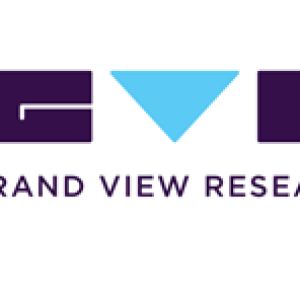PPG Biosensors Market Set to Witness an Uptick during 2021 to 2028Posted by Mrudula Anil Karmarkar on March 2nd, 2022 The global PPG biosensors market size is expected to reach USD 839.3 million by 2028, according to a new report by Grand View Research, Inc. The market is expected to expand at a CAGR of 12.1% from 2021 to 2028. An increasing number of cardiovascular disorders, the impact of COVID-19, the surge in adoption of smart wearables, and technological advancements are the key driving factors for the market. The increasing incidence of cardiovascular diseases across the globe is anticipated to drive the market. For instance, according to the American Heart Association, almost 17.0 million people die each year as a result of cardiac abnormalities, and this figure is expected to rise to 23 million by 2030. PPG typically measures blood pressure, oxygen saturation, and cardiac output through a series of waves and peak detection. Thus, the rising number of CVDs is expected to boost the demand for PPG biosensors, which is expected to lead to considerable market growth over the forecast period. The increasing adoption of wearable healthcare devices in developing economies is expected to drive the market. Fit bits, pulse oximeters, smartwatches, and other wearable healthcare systems are incorporated with optical sensors to provide real-time patient health tracking solutions. For instance, the Realme watch comes with wide-ranging health functions comprising of blood-oxygen-level (SpO2) and top-level PPG heart rate sensors. Several smartwatches with inbuilt PPG sensors from Apple, Moto G, Realme will be launching in later 2021. In Oct 2020, Mobvoi launched its new TicWatch Pro 3 smartwatch in India that consists of a PPG sensor. Moreover, smart rings are relatively new, however, Oura Ring facilitated with Infrared Photoplethysmography Sensors (PPG) for heart rate and respiration, is booming in the market. These sensors have many advantages, including high precision, small scale, and no sensitivity to electromagnetic radiation, which makes them suitable for use in medical-grade wearable devices. The COVID-19 pandemic has highlighted the importance of harnessing and leveraging digital technology for remote patient tracking. We see a need for more robust disease identification and control of patient and public wellbeing, which might be assisted by wearable devices, as existing viral testing and vaccines are slow to develop. COVID-19, like other viral illnesses, is associated with several physiological changes that can be tracked with wearable biosensors. Numerous cardiac rhythm indicators, such as Heart Rate (HR), Heart Rate Variability (HRV), Blood-volume Saturation, and Respiration Rate (RR), might serve as possible markers of COVID-19 infection and are already measured by smart wearables that use PPG technology. Companies are developing innovative technologies to facilitate healthcare staff in reducing transmission risks while still increasing clinician and patient safety. For instance, in May 2021, Masimo received FDA clearance for its Tetherless Radius PPG biosensors that aid the placement of point-of-care monitors outside of a patient’s room safeguarding constant monitoring from a distance. To Request Sample Copy of this report, click the link: https://www.grandviewresearch.com/industry-analysis/ppg-biosensors-market/request/rs1 PPG Biosensors Market Report Highlights
Tech giants such as Apple, Fitbit, Realme, and Samsung amongst many others are manufacturing smart wearables integrated with PPG biosensor technology. Key players are involved in adopting strategies such as mergers and acquisitions, partnerships, and launching new products to strengthen their foothold in the market for PPG biosensors. For instance, in August 2020, Valencell launched the world’s 1st calibration-free Blood Pressure (BP) sensor system for integration in hearables and wearables. The technology uses Photoplethysmography (PPG) and inertial sensors. In Nov 2020, Realme launched Realme Watch S with a PPG sensor and a SpO2 sensor across the globe. Key players are investing heavily in research and development to manufacture technologically advanced products. For instance, in May 2020 Fitbit launched a large-scale new atrial fibrillation research study aiming to enroll hundreds of thousands of fitness-tracker and smartwatch owners. The Fitbit Heart Study, passively and continuously monitored wearers\' heart rates using the device’s PPG sensors. Some of the prominent players in the PPG biosensors market include:
Like it? Share it!More by this author |


